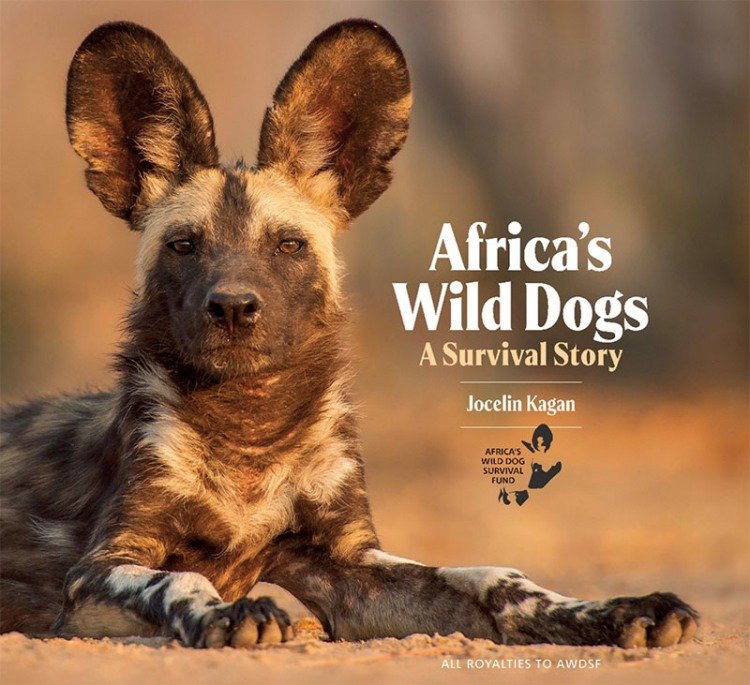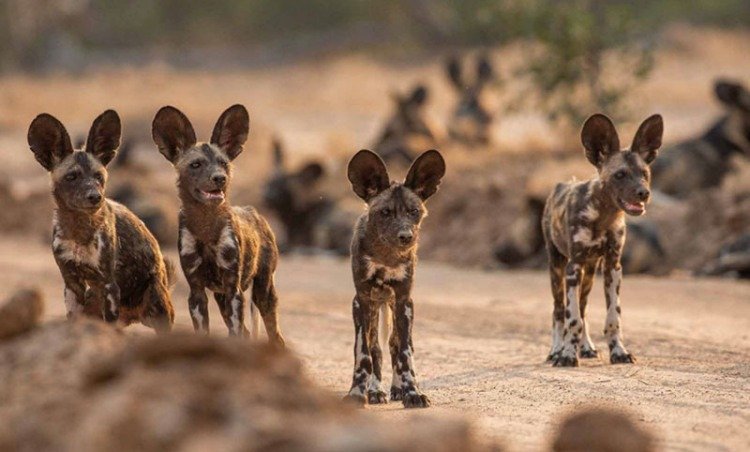I hope that through my book, Africa’s Wild Dogs, that I can share my passion and knowledge of the wild dogs’ story with animal lovers worldwide. Animals everywhere, I believe, deserve a deeper and greater respect than they currently receive.
What’s in a name?
The African wild dog is an animal that goes by many names – African painted dogs, painted wolves, African hunting dogs, Cape hunting dogs and more. Generally, people in Africa refer to them as African wild dogs, while the international community know them as painted wolves.
So, is it a dog or a wolf? The scientific classification has caused historic confusion and is the subject of ongoing debate. Back in the 1820s, Dutch zoologist Coenraad Temminck, erroneously declared the hyaena and wild dog to belong to the same genus and named it Hyaena picta (painted hyaena). Seven years later, British naturalist Joshua Brookes reclassified the wild dog as a canid, renaming it Lycaon tricolor (Lycaon from the Greek meaning wolf-like and tricolor the Latin for its three-coloured coat). Later the pictus was returned to the dog. The argument whether this is ‘wolf’ or ‘dog’ continues. I’ll leave the taxonomy discussion to the scientists. To me, ‘the dogs are born who they are and that is that’. It is we humans who cast judgement on them, classify and box them, and attempt to manage them.
Declining numbers
The dogs are beautiful, intelligent, and sociable animals, they are integral to the ecosystems of the African bush. Having once ranged widely in large packs throughout sub-Saharan Africa, they now are restricted to small populations in a few countries in southern Africa, some of which are declining rapidly. Lycaon pictus was classified as endangered by the International Union for Conservation of Nature (IUCN) in 2016.
As the body of research into the wild dog grows, we are constantly learning just what remarkable, non-confrontational and self-determined predators they are. Their complex social structure bonds members of their family, helping to ensure their survival and their dynasty.
My first encounter with the pack:
Curious, inquisitive, painterly-patterned in rich black, white and tan, a young pup steps closer and closer. Satisfied he is safe, he sits, sphinx-like and watches me. At five months, this African wild dog pup projects a tangible sense of self-assurance despite his youth. His huge ears turn like satellite dishes searching for a signal as he looks deep into my eyes. His own dark eyes seem to ask, ‘Who are you?’.
Did I feel afraid? Not at all. I felt exhilaration coursing through my veins at having these predators so close to me. More so, I felt humbled that they had chosen this proximity of their own volition. Questions raced through my mind. Is this wild predator something to be feared? Why are they so calm in my presence? How come they just mind their own business, while keeping me in their line of sight? Why do they not attack me? I keep watching, but get no answers to my questions.

This young pup paused for a moment, allowing me to take the portrait. To me, this image says it all and encapsulates the very essence of wild dog: intelligence, awareness, curiosity, and, of course, beauty.
This photo became the cover image of my book, and in turn inspired the creation of a registered non-profit organisation: Africa’s Wild Dog Survival Fund, which receives all royalties from sales of this book. We believe there is an urgent need to reappraise perceptions of wild dogs and awaken a global awareness of their plight and a desire to ensure their survival.
Photographing the dogs
My love of photographing wildlife has awakened in me a deep respect for the animals of our planet. Over the years I’ve learned to read their ways, listen to their conversations, observe behaviours and accept their table manners. I am extremely fortunate to have experienced many close encounters with a wide range of wild creatures. I’ve loved each of these encounters more than I can express, but it is the African wild dog that has captured my heart. I grew up with domestic dogs, and bred Cairn terriers, so I guess it comes as no surprise that the wild animal I feel closest to is a canine.
Now more than ever, we are aware of the importance of conserving wildlife, and the need for joint efforts to reach a shared conservation vision is paramount. New research into territories and scent marking can play a crucial role in protecting the dogs from roaming into places where we cannot protect them and help to maintain viable wild populations.

Photographing the dogs, I felt immediately that I was in the presence of an extraordinary animal that I – or rather, we – know very little about
With a mere 6,600 dogs left in southern Africa, the time to act is now to save this misunderstood animal. I am sure all dog lovers will agree that this species is worthy of protection, to not only survive, but to thrive.
Excerpt from Africa’s Wild Dogs, A Survival Story by Jocelin Kagan. All royalties go to Africa’s Wild Dog Survival Fund, and the book is available to buy via Merlin Unwin Books, and at all good bookshops.
